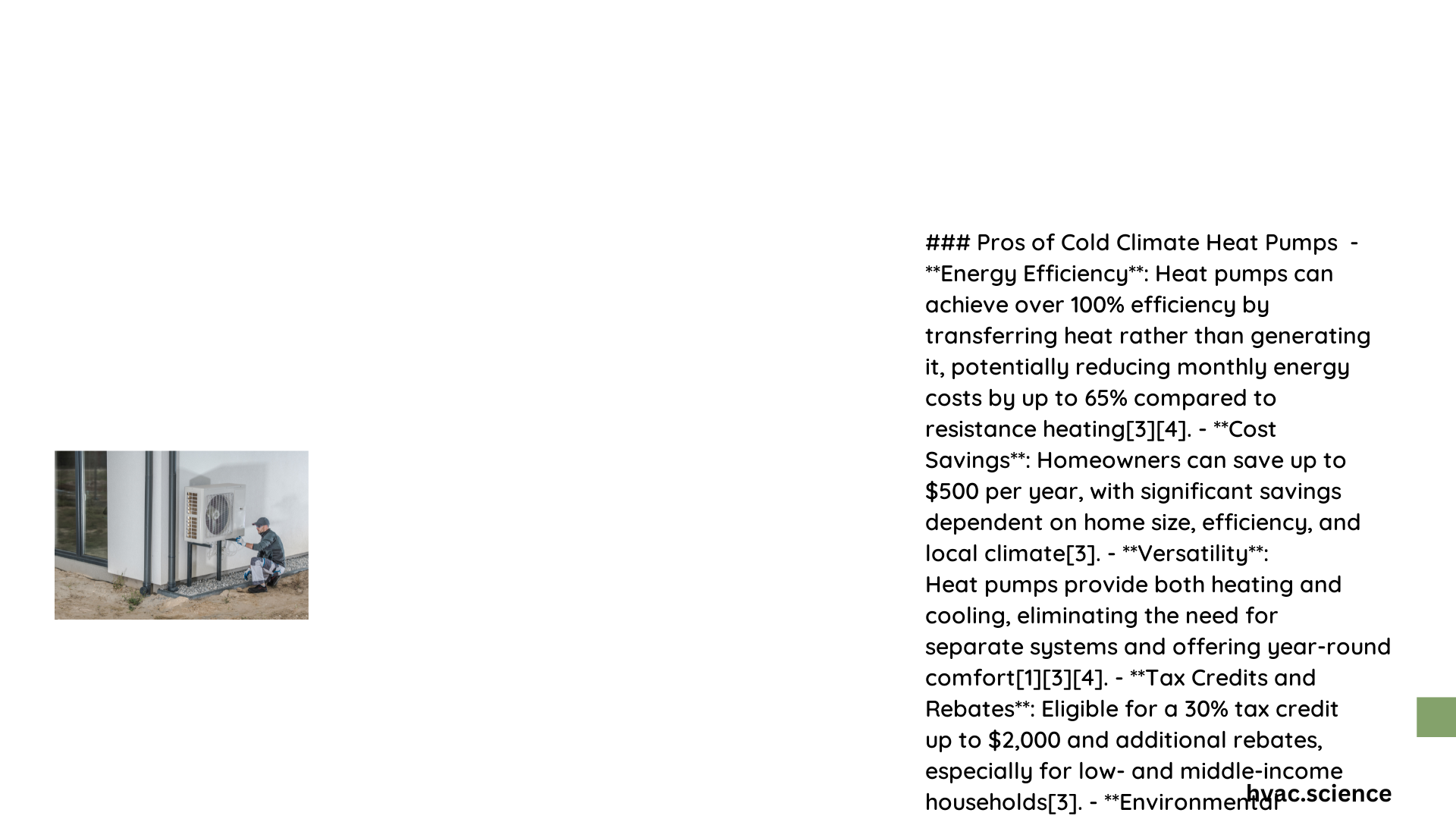Cold climate heat pumps represent a revolutionary heating and cooling technology that offers remarkable energy efficiency and environmental benefits. These advanced systems can operate effectively in temperatures as low as 5°F, providing homeowners with a versatile, sustainable solution for year-round temperature control. While offering significant advantages like reduced energy costs and lower carbon emissions, they also present unique challenges related to performance in extreme cold and initial installation expenses.
What Makes Cold Climate Heat Pumps Unique?
Cold climate heat pumps are specialized systems engineered to extract heat from outdoor air even during freezing temperatures. Unlike traditional heat pumps that struggle below 40°F, these advanced models utilize cutting-edge technologies to maintain optimal performance.
How Do Cold Climate Heat Pumps Work?
Heat pumps operate by transferring thermal energy from one location to another using a refrigeration cycle. In cold climates, they employ sophisticated mechanisms like:
- Variable Speed Compressors: Adjust operation based on temperature demands
- Flash Injection Technology: Enhances heat transfer efficiency
- Advanced Refrigerant Formulations: Improve low-temperature performance
What Are the Primary Advantages?

Energy Efficiency Breakthrough
| Efficiency Metric | Cold Climate Heat Pump | Traditional Heating System |
|---|---|---|
| HSPF Rating | 10-13 | 7-9 |
| Annual Energy Cost | $500-$800 | $1,200-$1,800 |
| Carbon Emissions | Significantly Lower | Higher |
Key advantages include:
– Up to 50% more energy-efficient than conventional systems
– Reduced utility bills
– Lower environmental impact
– Dual heating and cooling functionality
What Financial Incentives Exist?
Homeowners can benefit from:
– 30% federal tax credit (up to $2,000)
– State-level rebates
– Potential utility company incentives
– Long-term energy savings
What Challenges Do Cold Climate Heat Pumps Present?
Performance Limitations
Potential drawbacks include:
– Reduced heating capacity at extremely low temperatures
– Potential need for supplemental heating
– Higher upfront installation costs
– Complex maintenance requirements
How to Maximize Cold Climate Heat Pump Effectiveness?
Recommendations:
1. Ensure proper home insulation
2. Select model rated for your specific climate zone
3. Professional installation by certified technicians
4. Regular maintenance and system checks
What Factors Influence Heat Pump Selection?
Critical considerations:
– Local climate conditions
– Home size and insulation
– Budget constraints
– Long-term energy goals
Conclusion
Cold climate heat pumps offer a compelling solution for energy-conscious homeowners seeking efficient, environmentally friendly heating and cooling. While challenges exist, technological advancements continue to improve their performance and reliability.
